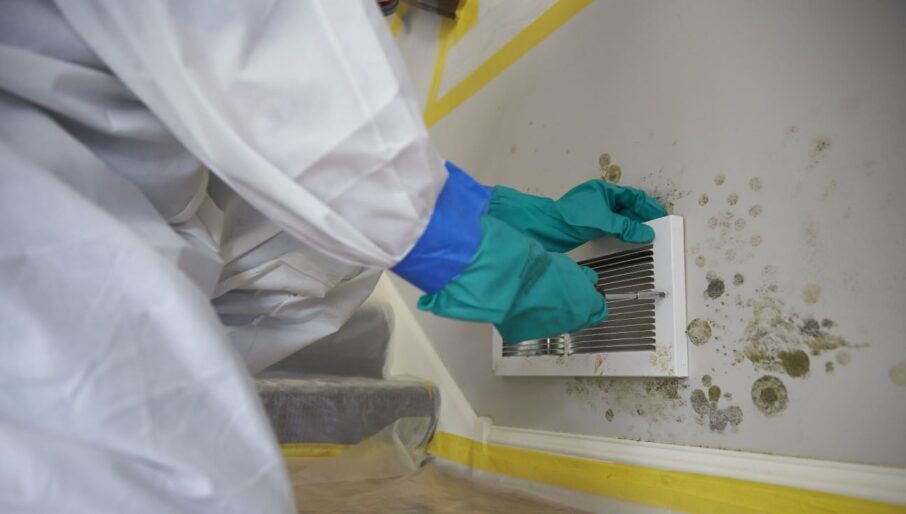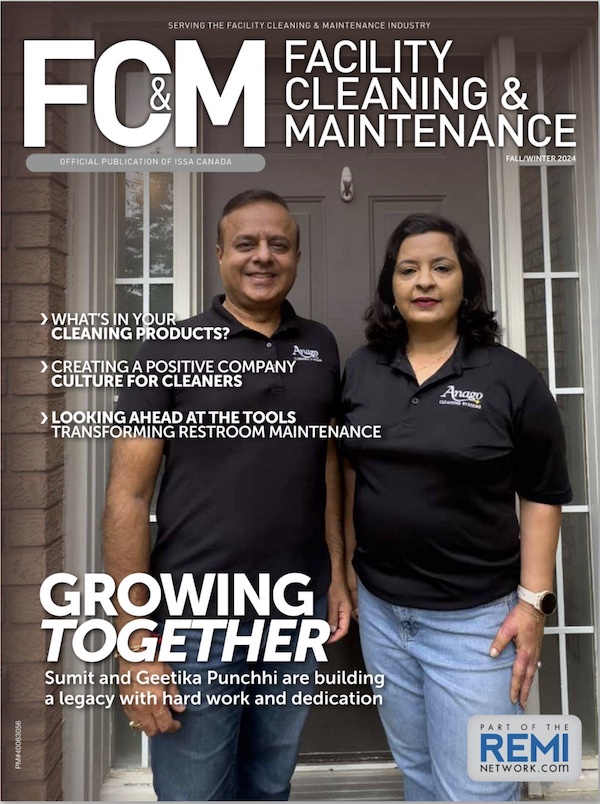In the vast and varied skyline of commercial buildings, mould growth can be lying in wait as a serious and potentially health-threatening issue. Whether it originates from a slow leak that’s gone unnoticed or water damage not fully remediated, mould can be lurking behind walls or under floors, waiting for the ideal conditions to flourish. Fortunately, this is a problem that can be solved, removing the threat to the structural integrity of the building and the well-being of its occupants.
Mould remediation is often not a do-it-yourself job as mould spores can travel once disturbed, making the damage exponentially worse. When faced with the challenge of mould growth and its detection, innovative solutions are essential, where industry experts use a combination of tried-and-true methods, cleaning products, and technologies to address each situation.
Armed with this comprehensive guide, facility and maintenance managers will be able to take steps to reclaim your commercial space from this subtle, dangerous threat.
Understanding mould growth
Mould growth relies on the right set of environmental factors, including humidity and moisture levels. Humidity levels above 60 per cent and moisture content exceeding 17 per cent do indeed create a perfect stage for mould to develop, however, temperature also plays a crucial role. Warm temperatures ranging from 20˚C to 30˚C are considered ideal for the growth of most moulds, although some moulds possess a great amount of adaptability, still able to flourish in cooler climates with prolonged exposure.
The lifecycle of mould growth can be explained in four stages:
- Spores alight on surfaces, finding a host or home for the next stage.
- The spores then begin to grow and form a filament-like structure.
- These filaments intertwine to create visually arresting colonies.
- Finally, mould starts to grow and reproduce.
It’s a spectacle where environmental conditions, nutrients, organic matter, poor ventilation, flooding, or dampness come together either to fast-track or impede its spread and growth.
The first sign or indication of mould infestation is often a musty odour. However, signs of potential mould issues can often be noticed visually as well. Recognizing signs of black spots, white tendrils, green splotches, or brown patches is the first step in identifying mould beneath the surface.
Mould can take hold and start to grow and spread almost anywhere, but areas like bathrooms, workplace kitchens, and air conditioning systems are often the most common areas, along with leaky roofs or damp underbuilding storage rooms.
The risk of mould in commercial buildings
As mould silently proliferates, the health of the building’s occupants can be affected. Mould spores can cause a variety of health issues including allergies, asthma, respiratory diseases, and infections, with long-term exposure potentially leading to eye irritation, fatigue, and skin rashes.
Mould infestation isn’t just a health concern, though. It is a potentially legal and financial situation waiting to unfold. The stakes are high: property devaluation, spiralling remediation costs, and potential legal liabilities under negligence laws. The ramifications are far-reaching, and the consequences, if not met head-on, can lead to extensive financial and legal implications.
So, when should you call in the experts? According to Health Canada, an area of mould is assessed to be large if a single patch measures more than three square metres. For areas of this size and larger, a qualified technician is recommended for safe and efficient removal, including a professional assessment to determine why the mould is there in the first place.
Preventative techniques to impede mould growth
When taking a proactive approach to mould, moisture control emerges as a primary source of prevention. Regular inspection and maintenance can go a long way toward deterrence. Identifying and repairing leaks, managing humidity, and ensuring proper ventilation in vulnerable areas are critical. As well, proper ventilation acts as a shield against moisture, so employing tools like dehumidifiers, especially in damp areas of the building, can be a pivotal step in stopping mould before it has a chance to begin.
Choosing the right building materials can also provide substantial protection against mould’s advances. Opting for materials resistant to moisture and mould, coupled with meticulous cleaning and maintenance, is a proactive defence strategy. Replacing damaged tiles and carpets might seem routine, but it’s a crucial manoeuvre in the battle to deter mould.
Cutting-edge mould remediation techniques
Early detection is still the strongest ally when it comes to mould growth. From air and surface sampling to molecular diagnostics and moisture detection tools, precision is key. Infrared cameras and moisture meters are highly helpful tools for mould detection.
Mould remediation isn’t just a cleanup; it’s a strategic operation. Containment, isolation, and meticulous removal with environmentally friendly agents are the most common tactics used today. Here are some of the most progressive and industry-acknowledged tools to consider for your arsenal:
Filtration that integrates High-Efficiency Particulate Air (HEPA) filtration systems capture airborne mould spores before they can disseminate through the building.
- Implementation of negative air pressure strategies helps to stop mould growth.
- Hydroxyl radicals and ozone generators work to purify air and eliminate odour.
- Sophisticated antimicrobial treatments can be applied during the remediation process to inhibit the regrowth of mould, as long as the treatments comply with industry standards and safety regulations.
- Adoption of biocide fogging techniques provides expansive coverage in large commercial spaces. This method ensures thorough disinfection of affected areas, minimizing the risk of residual mould.
The next step
The solution to the mould challenge cannot truly be answered without thorough scrutiny. Clearance testing and regular monitoring post-remediation provide final assurances. Independent assessors bring an unbiased lens, ensuring that no lingering spores have escaped notice. Regular inspections are the most effective way to prevent mould infestation. Plumbing, roofing, and HVAC systems require periodic check-ups to ensure there are no water leaks and, consequently, mould growth. One should not overlook the building envelope, moisture-resistant materials and vigilant sealing, as these too are extremely helpful in deterring moisture from beginning in the first place.
RELATED: Going digital with diagnostics
When it comes to the battle against moisture, this arsenal of preventative and remediation techniques transforms the narrative. It’s not just about reacting; it’s about developing a plan that strategically prevents mould’s subtle encroachments.
A final note
Early detection emerges as vital, prevention as essential, and cutting-edge remediation strategies as crucial. These tactics work together to prevent and eliminate mould growth, safeguarding commercial buildings and the people within. Armed with awareness, knowledge, and innovative strategies, our commercial custodians are the first defence in the maintenance of a healthy and safe environment.
Daniel Loosemore is chief of sales and operations at ServiceMaster Restore Canada. He and his team support over 70 franchises, delivering emergency disaster restoration services from coast to coast. To find out more, visit ServiceMasterRestore.ca.










